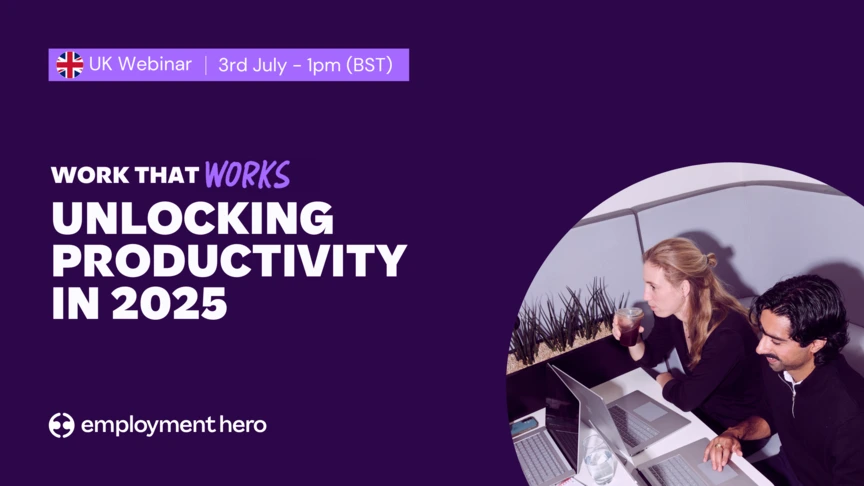Recruitment Trends 2022 Factsheet
Published
Recruitment Trends 2022 Factsheet
1 min read
Seeing a lot of “Help Wanted” signs up and down the high street lately? As we head towards the end of 2022, the talent crisis has barely eased. This Recruitment Trends 2022 UK factsheet features the powerful recruitment trends that are helping businesses around the country source new talent. It covers;
- New and creative strategies for talent outreach
- Tips from our own talent acquisition team
- How you can change your recruitment process to fit a tough market
- + much more
Download this free factsheet now.

What are the recruitment challenges being faced by UK SMEs?
In 2022, recruitment is tougher than it’s ever been.
In May, job vacancies outpaced unemployment rates for the first time since records began. The majority of businesses in the UK are now under strain, with some estimates suggesting that 68% of SMEs are experiencing skills shortages.
The more job vacancies and gaps there are in a workforce, the more intense the competition for talent becomes. To face recruitment issues head on, we first need to better understand this candidate driven market.
Skills and staff shortages
The biggest reason that employers aren’t finding staff? There’s simply a lack of skilled workers to go around. Dramatic skills and staff shortages are affecting many businesses, causing a drop in productivity and a slow to services.
Many of these shortages have been exacerbated by Brexit. In 2021, only 43,000 EU citizens were granted visas for work, family or study purposes, compared with the 230,000 to 430,000 EU citizens entering the UK each year in the six years to March 2020.
The talent pool is especially short in specific industries and sectors. Hospitality is up there with the most affected, alongside manufacturing, wholesale and retail, health and social work and construction.

The great resignation
Most employers are now familiar with this phenomenon. The trend of employees quitting in huge numbers kicked off in early 2021, and is still in effect.
There are many reasons driving this mass movement, from frustrations with a lack of appreciation or career opportunities, to wanting to pursue remote work opportunities, and feeling overworked (which can often come hand-in-hand with having to cover staff shortages).
While the numbers of those expecting to quit this year is still high, there is some hope that this trend is declining. In 2021 the World Economic Forum estimated that 41% of employees would leave their job within the year, whereas this year they predict that 20% will resign.
Competition
With so few staff and so many employees resigning, this is causing huge amounts of competition over staff that are looking for new opportunities.
This change in candidate numbers is requiring a change in recruitment processes that some businesses are struggling to make. The candidate experience shouldn’t look the same as it did three years ago.
Every stage of the recruitment process; from posting on job boards to the application process, running interviews and the onboarding process can be optimised. Making this process a positive experience for the applicant will help you move faster and better appeal to top talent.

How can you improve your recruitment process?
While our helpful factsheet covers recruitment trends for 2022 that will help you secure the right talent, what can you do to your recruitment process that will help you stand out in a competitive market?
Sell your workplace
Remember, you’re selling yourself as an employer as much as your candidate is selling themselves as an employee. Talking up your business needs to be a top priority.
You can do this from the very beginning of your recruitment process by maximising your employer branding. Employer branding is how your business markets itself to prospective talent and your own employees.
This brand voice and feel should also carry into your interview process. Instead of just offering up a one-way discussion where the interviewer is the only one asking questions — turn your interview into a conversation. Ask the candidate about their skills and experience, but also tell them the great things about your workplace and how the team works together.

Showcase your company culture
Do you offer remote or hybrid working? How about regular training sessions or team get-togethers? Maybe you even run a competition or incentive for great work based around your company’s values?
All of these things create a great company culture, which make up an essential part of your employer brand. Make sure your company culture is easy to spot throughout the recruitment process. If the candidate is coming into the office, introduce them to some other staff members or show them your great break spaces. If you’re advertising a remote role, consider introducing the candidate casually to some members of the team who they will not be reporting to, to ask questions about the culture.
If you’re looking to supercharge your company culture (and improve your employee engagement while you’re at it), download our free company culture bundle.

Streamline your recruitment process
Long waiting periods between interviews, a lack of communication or a lack of clarity throughout the recruitment process can make candidates distrust your business.
When working with a candidate driven market, UK businesses need to act fast with applicants. Creating a smoother process which is not weighed down by internal feedback, clunky technology and unclear communication can help.
Your best tool to get applicants moving quickly through the recruitment pipeline is a piece of recruitment software called an Applicant Tracking System (ATS). An ATS like Employment Hero’s doesn’t only help you post your role to leading job boards, it moves candidates easily through your recruitment funnel and provides a central location for team feedback.
With an ATS you can ditch the spreadsheets, email threads and handwritten notes. This smart tool makes it easy to sort applications, build shortlists and send contracts digitally with ease.
Learn more about applicant tracking systems.

Going beyond the traditional hiring process for the best talent
2022 is not presenting a normal hiring scenario, so why stick with your normal hiring process? If you’re going to win over new employees in the current market, it pays to engage with trends, adapt your recruitment process and look towards new talent pools.
Beyond these trends, if you’re looking for more ways to boost your hiring process, check out these resources;
Looking to hire abroad?
If you think that hiring a skilled person abroad could be the solution, discover Global Teams —our Employer of Record service.
Related Resources
-
 Read more: HR Guidance Factsheet
Read more: HR Guidance FactsheetHR Guidance Factsheet
Download our free UK HR Advisory Factsheet. Get expert insights on managing challenges, ensuring compliance & supporting your team effectively.
-
 Read more: Work that Works: Unlocking Productivity in 2025
Read more: Work that Works: Unlocking Productivity in 2025Work that Works: Unlocking Productivity in 2025
This webinar ended on 3 July 2025. UK productivity has been puzzling experts for years. But what’s really driving productivity…
-
 Read more: What is Structured Workplace Learning? A Comprehensive Guide
Read more: What is Structured Workplace Learning? A Comprehensive GuideWhat is Structured Workplace Learning? A Comprehensive Guide
Published Updated Contents Structured workplace learning isn’t just about ticking boxes or sitting through dull training sessions. It’s about growing,…










